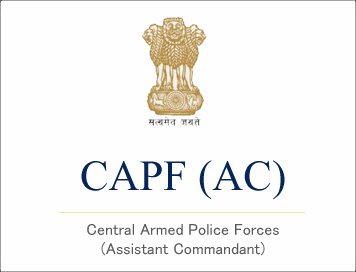केंद्रीय सशस्त्र पुलिस बल (CAPF AC) Exam Hindi Model Questions : SET-2
1. निम्नलिखित कथनों पर विचार कीजिए ।
1. अनुच्छेद 326 के अन्तर्गत मतदान करने की आयु घटा कर 18 वर्ष की गयी
2. संघ राज्य क्षेत्रों को छोड़कर कोई व्यक्ति लोकसभा में दो जगह से चुनाव नहीं लड़ सकता है
3. चुनाव आयोग की सलाह पर राष्ट्रपति आपात काल बढ़ा सकते है
उपर्युक्त कथनों में सही कथन है
a केवल 1
b केवल 1 एवं 2
c 1 एवं 3
d उपर्युक्त सभी
2. निम्नलिखित कथनों पर विचार कीजिए ।
1. संसद में स्थान की रिक्ति के एक वर्ष के अन्दर में उप-चुनाव होते है।
2. यदि चुनाव होने के पहले किसी प्रत्याशी की मृत्यु हो जाती है तो पार्टी 7 दिन के अन्दर एक नया प्रत्याशी उतार सकती है।
3. डाक से वोट देने का अधिकार 1999 में आया
उपर्युक्त कथनों में सही कथन है ?
a केवल 1
b केवल 2 एवं 3
c 1 एवं 3
d उपर्युक्त सभी
3. निम्नलिखित कथनों पर विचार कीजिए ।
1. राज्यसभा के लिए व्यक्ति जिस राज्य से नामाँकित होता है उसका उस राज्य का निवास प्रमाण पत्र होना चाहिए
2. किसी व्यक्ति को कोई एक राजनीतिक दल चुनाव में उतार सकता है
3. राज्य सभा में खुला मतदान होता है
उपर्युक्त कथनों में सही कथन है
a केवल 1
b केवल 2 एवं 3
c 1 एवं 3
d उपर्युक्त सभी
4. ‘आनुवांशिक कटाव’ के संबंध में निम्न कथनों पर विचार करें :
1. आनुवांशिक कटाव का तात्पर्य है, पैदावार की निविधता और कमी
2. आनुवांशिक कटाव में कृषि के परिवर्तन में मदद मिलता है।
3. आनुवांशिक कटाव तब होता है जब मनुष्य कोई नया फसल उगाता है तथा उसे प्राथमिकता देता है।
4. आर्थिक औद्योगिक विकास भी आनुवांशिक कटाव में बड़ी भूमिका निभाते हैं।
उपरोक्त में से कौन सा कथन सही है?
a 1 और 2
b 2 और 3
c 1, 2 और 3
d सभी
5. क्लोरिन का एक एटम, ओज़ोन के कितने एटम का विनाश कर सकते हैं?
a एक हजार
b दस हजार
c 50 हजार
d एक लाख
ANS: 1(a), 2(b), 3(b), 4(d), 5(d)




